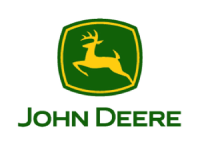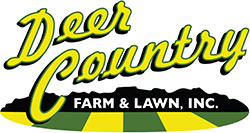Scouting for Sidewall Compaction
When evaluating closing wheels in our test plot, we also questioned which wheels would help alleviate sidewall compaction. Like many this year, we were faced with a shortening window to get our field planted and decided to go on a day when it was marginally too wet to plant. Sidewall compaction was a concern and downforce was backed off as far as we felt we could go and still achieve target depth; which ended up being 280 lbs downforce. During and after planting, we excavated seed trenches to look for signs of sidewall compaction. Evidence was present that some closing wheel systems did a better job of breaking up or eliminating the sidewall but it was difficult to compare the results. Exposing the root structure of established plants paints a clearer picture of the effects of sidewall compaction. “Hatchet Root” or root structure constricted to the furrow
due to sidewall compaction limits the plant’s access to nutrients or water and reduces standability.
Beyond comparing the effects of different closing wheels, scouting for sidewall compaction can help you make better decisions for future planting seasons about your planter downforce. The Operations Center is a helpful resource in determining where to check for compaction issues or can help explain areas where a scout finds compaction problems. The gauge wheel margin map layer found in Field Analyzer can show areas where margin was too high or just right. Checking root growth in those areas can help you evaluate your planter’s performance and make adjustments for next year. Any Seedstar XP planter with gauge wheel sensors will create a map layer in the Ops Center showing Gauge Wheel Margin. If you have an updated Seedstar4 planter, you will also have an applied downforce layer to see the actual pressure applied. In the gauge wheel margin map layer for our test plot our average margin was 80lbs, with some areas over 100 lbs. Where the plants in the photos were pulled, the margin would have been around 50-80 lbs.
Check out the photos below to see the difference in root structure between different closing wheel systems in our test plot.
#1 John Deere Rubber Wheel
#2 John Deere Cast Iron Wheel
#3 Schlagel Posi-Wheel
#4 Dawn Curvetine
#5 Martin BSCW1344D
#6 Martin BSCW1344DC with Rubber 2nd Stage Wheel
#7 Martin BSCW1444C with fCrumbler 2nd Stage Wheel
#8 Martin fCrusher Dual
#9 Yetter Twister
#10 Martin BSCW1444C
#11 Martin BSCW1344DC
#12 Martin BSCW1344D with fCrumbler 2nd Stage Wheel
Root growth constricted to furrow, evidence of sidewall compaction
Comparison of #2 John Deere Cast Iron with #9 Yetter Twister


